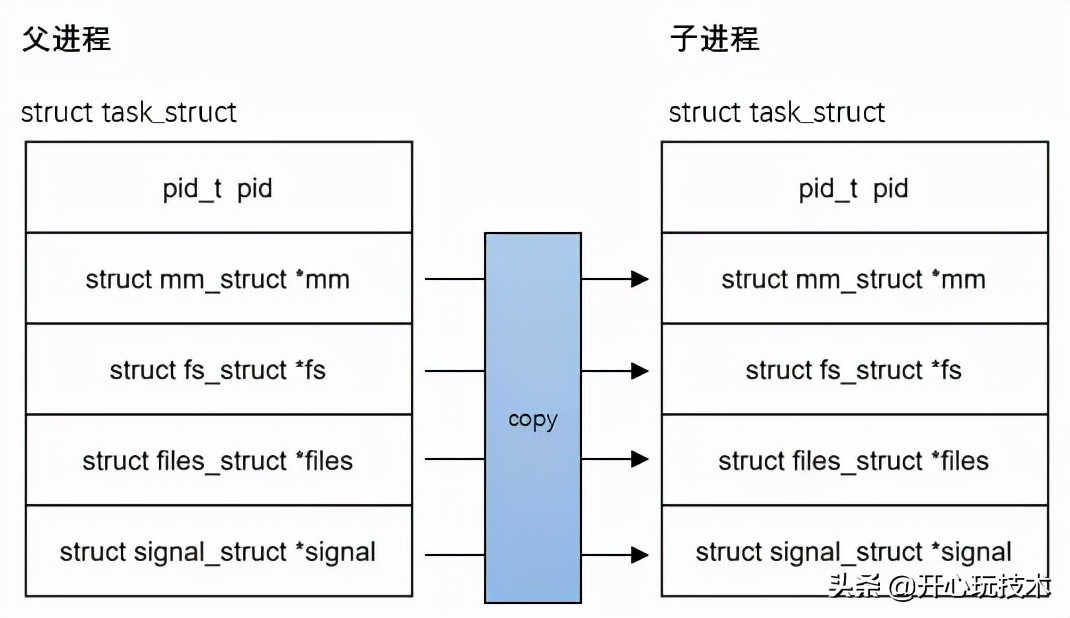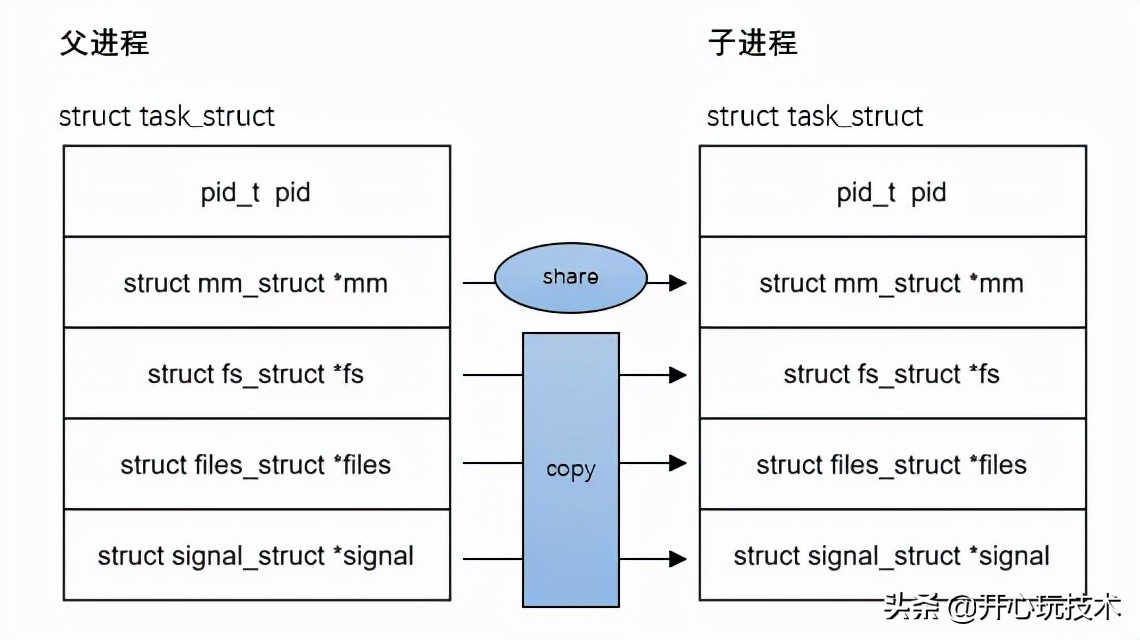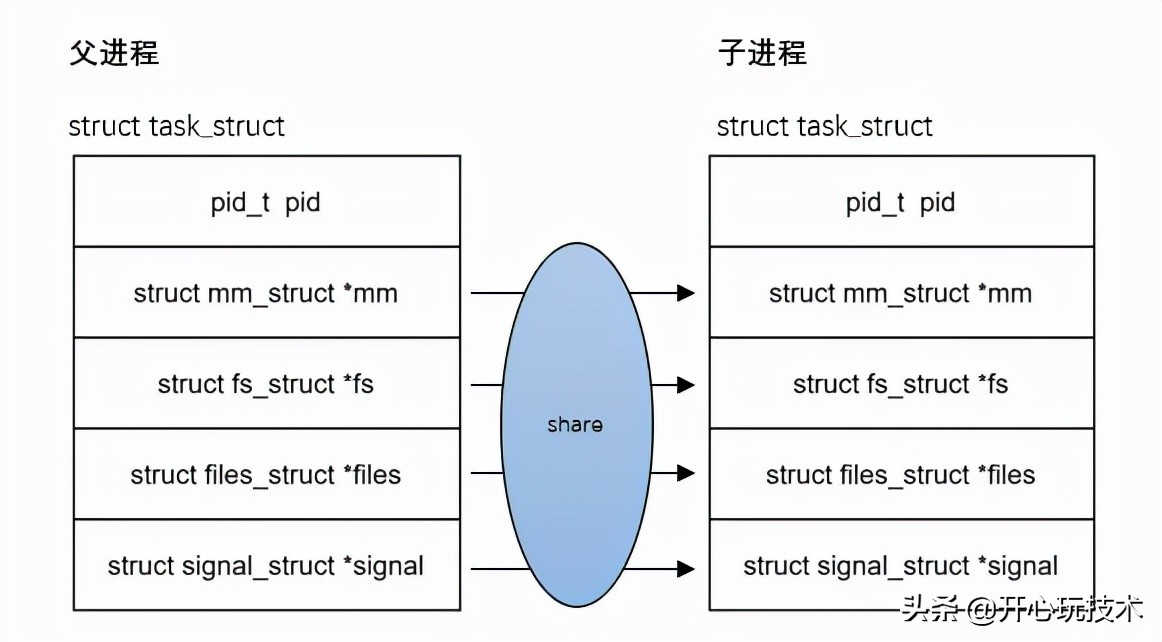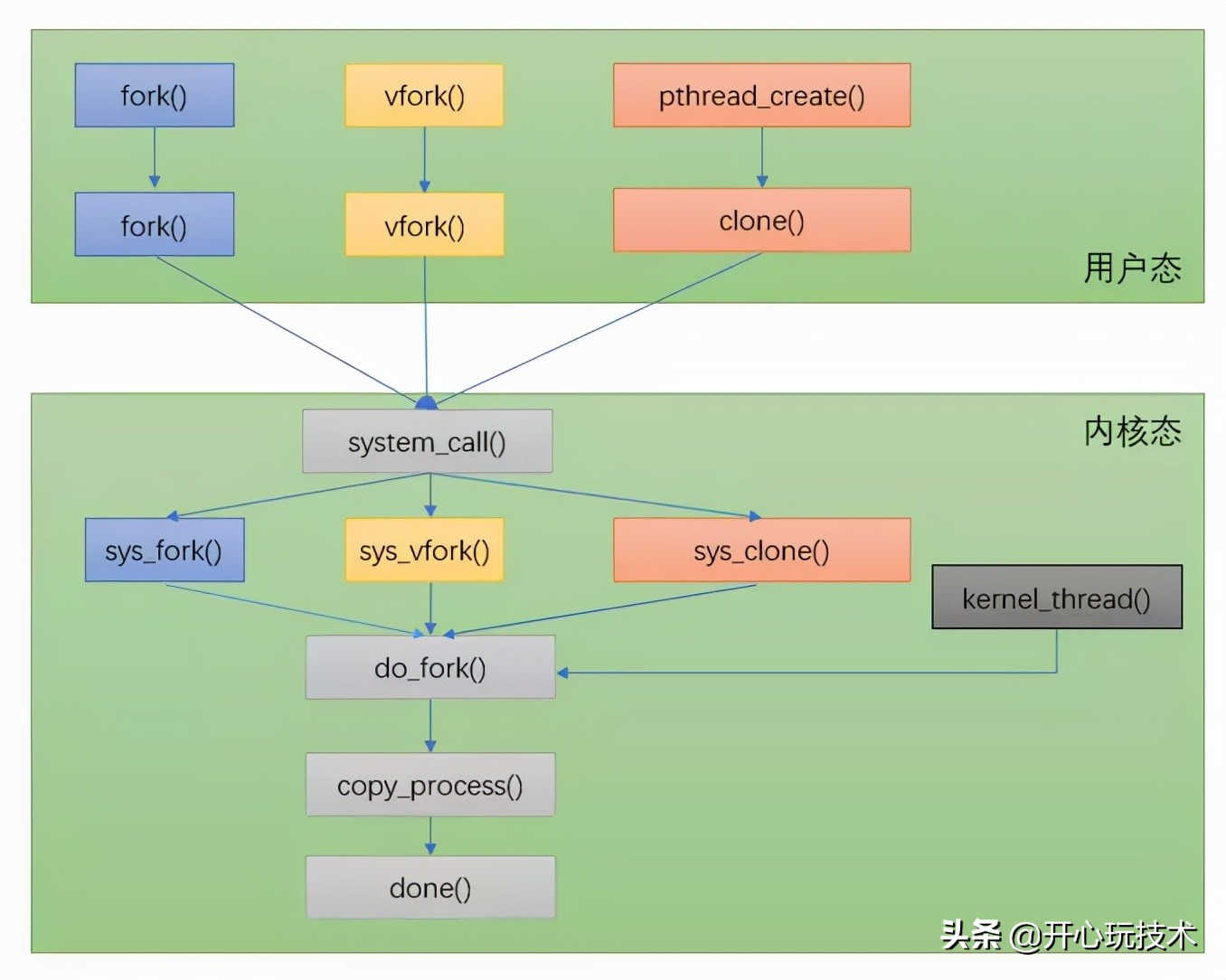create的各种形式(create的固定搭配)
fork
Rw.hAo22.cOm
fork 函数创建子进程成功后,父进程返回子进程的 pid,子进程返回0。具体描述如下:
- fork返回值为-1, 代表创建子进程失败
- fork返回值为0,代表子进程创建成功,这个分支是子进程的运行逻辑
- fork返回值大于0,这个分支是父进程的运行逻辑,并且返回值等于子进程的 pid
我们看下通过 fork 系统调用来创建子进程的例子:
#include
#include
#include
int main()
{
pid_t pid = fork();
if(pid == -1){
printf("create child process failed!n");
return -1;
}else if(pid == 0){
printf("This is child process!n");
}else{
printf("This is parent process!n");
printf("parent process pid = %dn",getpid());
printf("child process pid = %dn",pid);
}
getchar();
return 0;
}
运行结果:
$ ./a.out
This is parent process!
parent process pid = 25483
child process pid = 25484
This is child process!
从上面的运行结果来看,子进程的pid=25484, 父进程的pid=25483。
在前面介绍内存缺页异常的时候,提到写时复制 COW 是一种推迟或者避免复制数据的技术,主要用在 fork 系统调用里,当执行 fork 创建新子进程时,内核不需要复制父进程的整个进程地址空间给子进程,而是让父进程和子进程共享同一个副本,只有写入时,数据才会被复制。我们用一个简单里的例子描述下:
#include
#include
#include
int peter = 10;
int main()
{
pid_t pid = fork();
if(pid == -1){
printf("create child process failed!n");
return -1;
}else if(pid == 0){
printf("This is child process, peter = %d!n", peter);
peter = 100;
printf("After child process modify peter = %dn", peter);
}else{
printf("This is parent process = %d!n", peter);
}
getchar();
return 0;
}
执行结果:
$ ./a.out
This is parent process = 10!
This is child process, peter = 10!
After child process modify peter = 100
从运行结果可以看到,不论子进程如何去修改 peter 的值,父进程永远看到的是自己的那一份。

vfork
接下来看下使用 vfork 来创建子进程:
#include
#include
#include
#include
int peter = 10;
int main()
{
pid_t pid = vfork();
if(pid == -1){
printf("create child process failed!n");
return -1;
}else if(pid == 0){
printf("This is child process, peter = %d!n", peter);
peter = 100;
printf("After child process modify peter = %dn", peter);
exit(0);
}else{
printf("This is parent process = %d!n", peter);
}
getchar();
return 0;
}
运行结果:
$ ./a.out
This is child process, peter = 10!
After child process modify peter = 100
This is parent process = 100!
从运行结果中可以看出,当子进程修改了 peter=100 之后,父进程中打印 peter 的值也是100。

C/C++Linux服务器开发/后台架构师【零声教育】-学习视频教程-腾讯课堂
【文章福利】:小编整理了一些个人觉得比较好的学习书籍、视频资料共享在群文件里面,有需要的可以自行添加哦!~点击加入(832218493需要自取)

pthread_create
现在我们知道了创建进程有两种方式:fork,vfork。那么创建线程呢?
Rw.hAo22.cOm
线程的创建接口是用 pthread_create:
#include
#include
#include
#include
#include
int peter = 10;
static pid_t gettid(void)
{
return syscall(SYS_gettid);
}
static void* thread_call(void* arg)
{
peter = 100;
printf("create thread success!n");
printf("thread_call pid = %d, tid = %d, peter = %dn", getpid(), gettid(), peter);
return NULL;
}
int main()
{
int ret;
pthread_t thread;
ret = pthread_create(&thread, NULL, thread_call, NULL);
if(ret == -1)
printf("create thread faild!n");
ret = pthread_join(thread, NULL);
if(ret == -1)
printf("pthread join failed!n");
printf("process pid = %d, tid = %d, peter = %dn", getpid(), gettid(), peter);
return ret;
}
运行结果:
$ ./a.out
create thread success!
thread_call pid = 9719, tid = 9720, peter = 100
process pid = 9719, tid = 9719, peter = 100
从上面的结果可以看出:进程和线程的 pid 都是相同的。当线程修改了 peter = 100 之后,父进程中打印 peter 的值也是100。

进程线程创建总图
上面介绍了用户态创建进程和线程的方式,以及各个方式的特点。关于其底层的实现本质,我们后面会详细讲解。这里先提供一下三者之间的关系,可见三者最终都会调用 do_fork 实现。

Rw.hAo22.cOm
但是内核态没有进程线程的概念,内核中只认 task_struct 结构,只要是 task_struct 结构就可以参与调度。
Rw.hAo22.cOm
Rw.hAo22.cOm
.TUZ84 { display:none; }
















评论